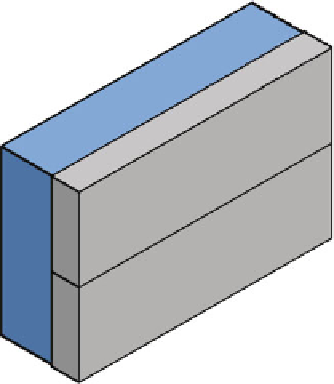Geoscience Reference
In-Depth Information
U
l
dr
−
dr
+
l
−
x
l
+
-dr
−
-dr
+
Fig. 11.13
A model of electrical effect caused by an aerial SW propagating in the sur-
face/electrode layer with width l. The charge density variations due to the presence of heavy
ions and aerosols are modeled by a step-function. Also shown are the electrical images of the
atmospheric charges in the conducting ground
To estimate the aerial SW effect in the electrode layer, we now consider a simple
model in which a plane steady SW propagates at constant velocity U along the x
axis parallel to the ground surface. The dynamics of the particles motion behind
the SW is described by Eq. (
11.31
). The numerical estimate has shown that the
relaxation time
D
m=.6a/, which enter Eq. (
11.31
), is much smaller than the
wave duration. This implies that there will be complete entrainment of aerosols and
heavy ions with air flow. In the first approximation the changes in the spatial charge
density is supposed to follow the changes in the air density. We set the profile of the
gas mass velocity as a rectangular pulse with positive polarity followed by the next
one with negative polarity. The amplitudes, V
C
and V
, and lengths,
C
and
,
of these rectangular pulses are connected through V
C
C
D
V
. The continuity
equation for the electric charge flowing through the SW front is given by
0
U
D
C
.U
V
C
/;
(11.33)
where
C
denotes the charge density in the air compressed by the SW while
0
is
the undisturbed charge density. Hence the small perturbations of the charge density
can be written as ı
C
D
C
V
C
=U. The charge variations behind the SW front is
described by a step-function in such a way that ı
D
ı
C
within the length
C
of
“positive half-wave” and ı
D
ı
within the length
of “negative half-wave.”
The model distribution of the charges and their electrical images in the conducting
ground is sketched in Fig.
11.13
.
















Search WWH ::

Custom Search